I’m in Hawke’s Bay for a couple of days – but it is Midwinter and quite cold. At Amy’s house she’s struggling to get the wood fire going to warm the place up after a few days away. There was snow on the higher points of the drive over from Taupo. I manage a Wine Bar & Cellar and stock all of the Amoise wines – which are very popular. The Amoise Gris will regularly be on the Wine List, and it be one of the bestsellers. Amy has been and notes “I learnt the hard way that you don’t go to Devonport around school closing hours!”
The thing I really wanted to ask Amy, above anything else, is the first question I pose – leading to the following conversation…
WF: How has Amoise worked? In my opinion, the labels look like they were designed by a child. Your wines don’t really ‘fit in the box’. Using varietals that aren’t mainstream. And I look at it, and think to myself ‘this is really popular, and growing, and successful’ – so from your perspective, how does that work?
AF: Business is thriving. Amoise is my nickname so it is a very personal thing s. A French-Canadian nickname that doesn’t mean anything. It’s like a slang Franglais word, and back in my hospo days it was my nickname. So the logo – how it looks – is because that’s my signature. I’d written it in chalk on a barrel when I was working at Paritua, and my friend, Dan Brennan saw it and said ‘you should call your wines that’. When you put yourself out there and you have so much of your own self in the brand, it helps that it is me selling the wine and passing on the story. Each label has a story and a meaning behind it.
I think ‘it works’ because I’m offering a segment of New Zealand wine that is rare. People are so used to having the regular Holy Trinity of your Sauvignon Blanc, Chardonnay and Pinot Noir. Gamay Noir isn’t your everyday offering. When I worked in Wellington I noticed that everybody had rules about what you had to have on your list. And my first wine was an orange wine, so first and foremost, it was the only Organic fruit I could get. But I didn’t want to just make a Pinot Gris. I wanted to make something interesting with it. I always knew I wanted to do skin contact.
I think it is maybe successful because if you believe in what you’re doing, it catches on; and people get that vibe and energy. Because I’m the one selling the wine it’s different from someone else pouring on my behalf. But I’ve got places like you guys who are like mini-ambassadors for me. Most of my customers are restaurants. And they know the stories behind it.
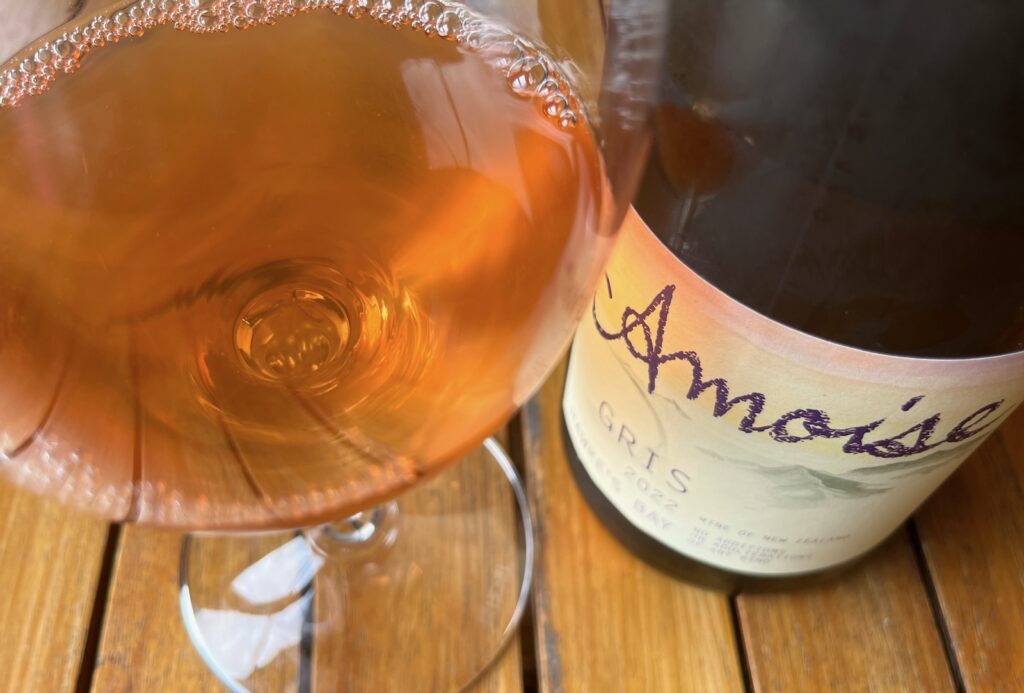
WF: I was just at Askerne and Cairn said that he thinks one of the reasons why their Gewurz has been successful is just through sheer persistence. Putting out great wine year after year, even if the category doesn’t seem trendy. Is there a bit of that to Amoise?
AF: I think that’s what it is. I’ve had people around me that support me and believe in what I’m doing, but not only that – I really believe in what I’m doing. I think it is because my wines aren’t super-weird, but are just good-quality wines, full stop. I’m very attentive and pedantic in the cellar, so I don’t want people to go “Oh that’s a natural wine”. I want them to say “That’s a good wine”.
WF: In some ways, what you’re doing is ancient winemaking, but it also feels progressive and in tune with what people want now?
AF: I think if you love what you’re doing, people pick up on that. I have access to such amazing fruit, and because I’m a part of that process too – working in the vineyard throughout the year. It’s just sheer luck. In the beginning I got fruit from Amy at Halycon Days – she helped me get my first bit of Pinot Gris, which was great, and how I was able to make my first wine. That was from the Osawa Vineyard. In Hawke’s Bay when you’re looking for organic fruit, you take what’s given to you! There wasn’t much available in 2018. Now, Paritua is fully certified, and Alpha Domus is getting there. Oak Estate and Ash Ridge. So there are places, but back then, there weren’t options. So – Pinot Gris? Great! One tonne and three barrels is what I started with.
When I heard about Ian and Linda Quinn from the Two Terraces vineyard, I immediately made contact with them. As soon as I heard there was Chenin Blanc, because how cool would it be if I did Cab Franc and Chenin Blanc – the two Loire varieties that I love. And I already had access to the Cabernet Franc, from William Murdoch. And it’s brilliant fruit – Gimblett Gravels – just lovely. But the thing about not owning your own vineyard, is that the supply isn’t certain. In 2020 there was no Cabernet Franc but I found some more through Bridget Wilton who is one of my viticultural mentors. She helped me out quite a bit.
There was a period where they didn’t have a Vineyard Manager at Paritua and I was looking after things. It’s a huge vineyard, and I was Assistant Winemaker, so Bridget would walk the rows with me and help me out. The ten rows of Cabernet Franc that I purchase now are the same ten rows every year from the TK Vineyard. In 2020 Ian and Linda let me come into the fold, and let me have just under a couple of tonne of Chenin Blanc. Then in 2021 a bit of Gamay. Then they said ‘we’ve got these four rows of Syrah – would you like that?’ So it has progressively grown.
I do my own pruning in the Cab Franc, and I do the shoot thinning and biodynamics throughout the year, so I like being connected with the vineyard. In the past I have done some pruning at Two Terraces, but he has a really good crew – the Song family – that comes every year, and know the vines really well. And if you’re a grower who isn’t going to make their own wine, then something like the 20 hectares they have is good. When Greg and I get our own piece of land one day, we’ll probably look at doing five to seven hectares, so we can do it all ourselves. When I was in France – that was the model.
WF: Tell me about your route to here?
AF: I’m Canadian, obviously. But my Mum is a kiwi, so I do have a bit of roots here. I had come to New Zealand off and on, over the years. I worked in the sales and marketing of wine, and hospitality – for a really good importer with the highest amount of organic and biodynamic wine across Canada. I used to write and tell the stories, but then the GFC hit and I lost my job.
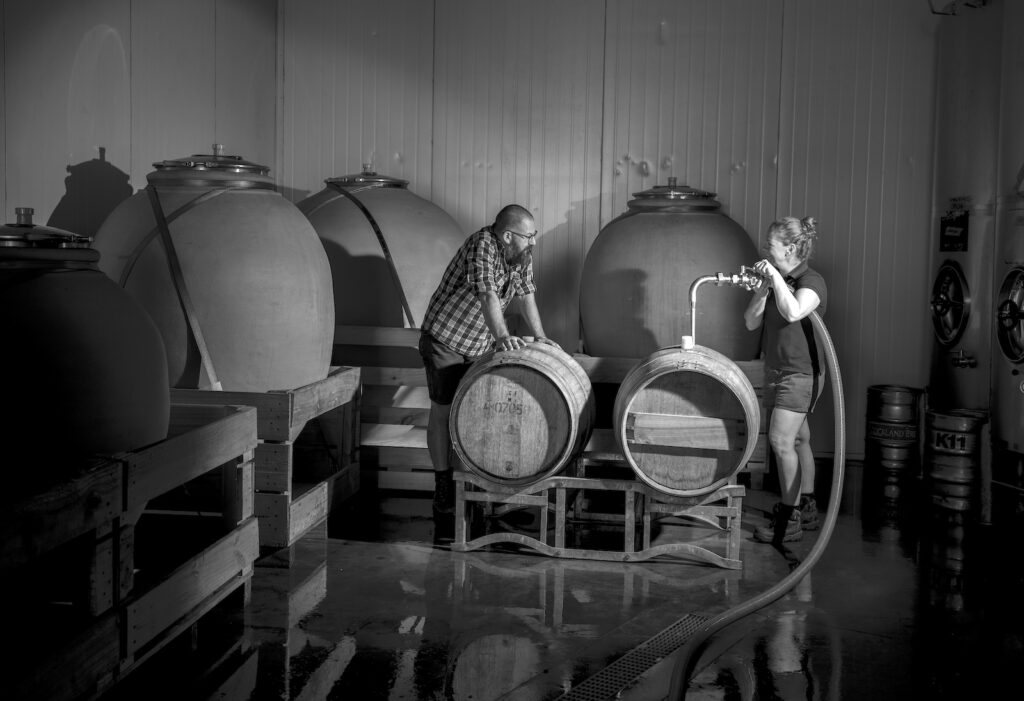
I was doing my WSET Diploma and had lost my mojo. I just wasn’t keen on it any more. But I was at the Viticulture and Winemaking part of it – so I thought – why don’t I just go and work on a vineyard? If I’m there it might spark something. And it did. I moved here and went to work at Felton Road for a year. I got to do the whole growing season, and work in the winery and the Tasting Room. There’s a scholarship that they do now with Lincoln, and I was the model for it, as it went so brilliantly.
I did my thesis on wine closures, so Blair would give me these books… and I had all the tools I could possibly want; and flew up and finished my exams in Auckland. So I actually finished my diploma here, which was great. I was at Black Estate for a few years, who are very cool. They are like my family as well. I often go and see them. Nicholas makes wine in the way that I like. The region is fantastic. So much energy, with young people doing great things. It’s one of the most under-rated regions in New Zealand. After the Organic Conference I went down there and was checking out the high trellis system at Greystone. I feel lucky for the places that I have ended up. And it cemented my belief in how everything is one circular ecosystem where everything is intertwined.
Then I went to Burgundy, and did a vintage there, falling in love with Beaune. I decided to study winemaking and viticulture there, so that I could stay. I lived there for about three years and I did the program at the CFPPR de Beaune, which is a diploma for if you want to start your own Domaine. I was going to school with Etiennette Dauvissat, and Sylvestre Mosse whose parents make really famous Natural wine in Anjou. These famous young vignerons who are getting ready to take over the reins. We were doing field trips and tasting all the time. I learnt to prune in 50-60 year old vines in Nuits St Georges.
I really soaked up the history of Burgundy and after I finished my diploma, my friend Christina hired me to be a Tour Guide there! I was making appointments at all these really amazing Domaines, and showing people around. I would drive 130 kilometres a day, up and down the Cotes du Beaune and the Cotes du Nuits, saying “I can’t believe I get paid to do this, this is crazy!”. I already spoke French, being from Canada, but once I went to school I had no choice but to get my French back! After a year there I was fully bilingual again.
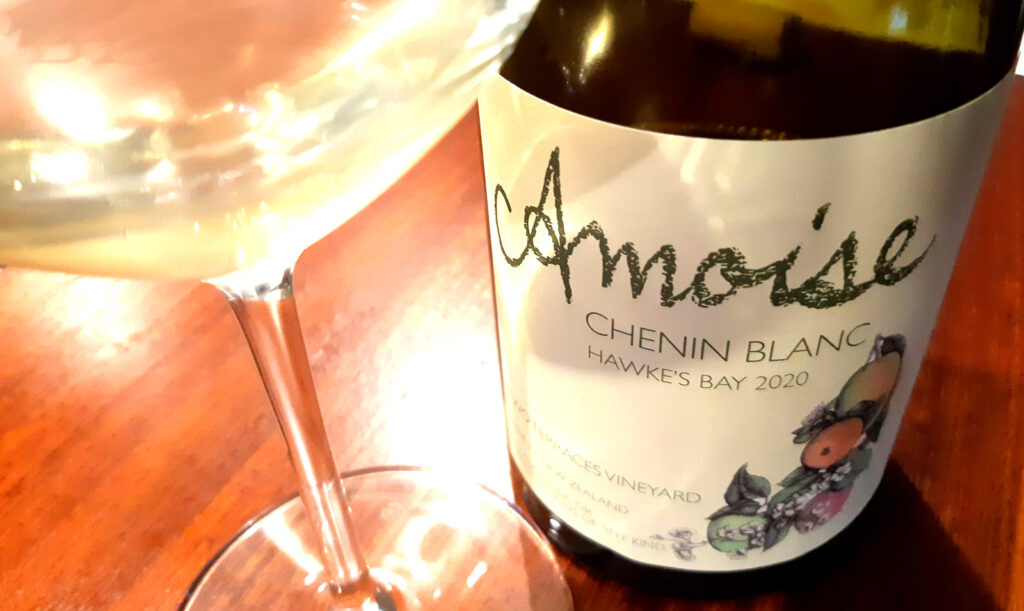
That’s where I discovered Natural wine. I knew a little bit about Natural wine from my work in Vancouver. I first tried them around 2006 and I knew the story, and the premise, behind it but rubbing shoulders with the people who made those wines in the bars there. As a student, you’re not going to be drinking Premier Cru every day. I was drinking heaps of Beaujolais and lots of Loire wines. Jura was a 45-minute car ride. I went to all the Natural wine fairs. After working for several people that made wine without intervention, I came to consider that most of the work is done in the vineyard. Winemaking is purely done at harvest, which is just a small time of the year.
I felt that I needed to learn more about winemaking so I started travelling. And did that for about eight years – harvests all around the world. I’d come back to New Zealand, then I’d go to Italy and then Canada. I did the rounds but I always kept coming back to New Zealand. I did work at Pegasus Bay – with Jannine, who was the red winemaker at the time, after a harvest in the Hunter. Then after doing that for a while I landed here to do a harvest at Paritua, and I got to stay. Dan was moving on and he handed the torch of Assistant Winemaker job to me.
It’s a great place because the world is your oyster here. It’s not pre-destined. I don’t need to subscribe to what certain varieties are already planted and what has already been decided. I made an Albarino this year for the first time. I never would have envisioned it, but I also never set out to make a Sauvignon Blanc and a Pinot Noir and compete with the established people who are already doing that – that was never going to be my model. I always knew I wanted to make Cab Franc or Chenin Blanc, and alternative varieties.
People like Halcyon Days – their Sauvignon Blanc is amazing, I love theirs. And A Thousand Gods – I love all their different expressions, they’re electric. Let those people do the good work. And Churton – they just got Winery of the Year from Jo Bursynzka, which I thought was fantastic. I loved her pick of people!
WF: Yes! I never set out to be a judge, or scorer/reviewer of wines. I’m more of a story-teller type writer, and I do like some of the new approach that is coming into New Zealand wine. I’ve always admired the irreverence of someone like Yvonne Lorkin, who makes me laugh out loud – she’s a proper ‘writer’ not just someone who is good at judging wines. It’s not the same thing. What do you think of the ‘media’ – people like me who comment and write and review?
AF: I think it takes a lot of talent – to do something like judging. It’s a hard, physically-taxing job. I think I wouldn’t be cut out for it! My partner, Greg has been a judge at the Air New Zealand show, and I did stewarding once to see what it was like. It was very well-run. It looked more fun than the judging! You got to try the wines still, and if I was trying to make commercially-popular wines, then maybe I would be more interested in it.
WF: Is there a show for your type of thing?
AF: No, there isn’t, but New Zealand Winegrowers is doing something called the Blind Wine Tasting, and it is every year. They’ve allowed categories for things like Chilled Reds and Orange wine. There are the Organic Wine awards as well, but I can’t submit my wines because I’m not certified BioGro. My grapes are, however I haven’t had the funds thus far to be certified – your ‘winery’ needs to be certified.
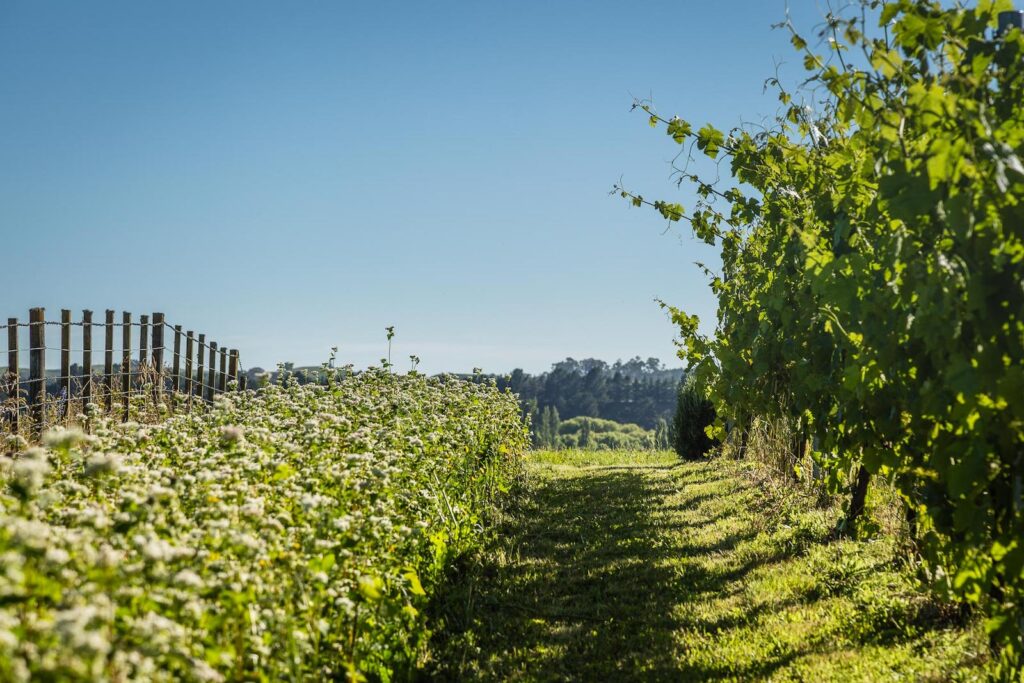
I’ve been doing the right thing in the vineyard for a very long time, and I’m very secure in that. I’m happy to show anyone my spray records, and I am the only one who is doing biodynamic applications in the vineyards as well. I’m going above and beyond organic, and at this point I feel like I have the trust from my consumers. I also help make the biodynamics preparations for New Zealand, under the tutelage of Chris Hull of course – who worked with Peter Proctor, and has been doing it for over 35 years.
I’m already doing everything I can to increase biodiversity and improve soil health, it’s just that I don’t have that logo on my bottle. I would like that one day, but as I’m growing my business I have chosen to purchase more premium fruit instead. But, for the record, I fully respect the process! That people are vetted and audited.
WF: Is New Zealand your main market?
AF: I do export. The percentages have changed. It used to be sort of 60% New Zealand and then 40% export, but now it is pretty much 50/50. I’ve been working with Japan for the last few years, and my biggest market is New York. I can’t make enough wine to supply the markets!
WF: Is there a plan to grow?
AF: I’m still trying to get to that 20-tonne mark at the moment, which is a lot for one person. It’s manageable. A lot of my colleagues are already doing it – like Julz (Brogden at Collaboration) for example. Daniel Brennan has been looking for his own space for a while. A lot of us are quite mobile businesses. I get my grapes from Two Terraces vineyard, I rent a space at Ash Ridge, which is where I’m making my wine. I can do all of this, almost remotely, without owning any land. And I see that as the only way it can be done at the moment.
The cost of land is so expensive, but we definitely want and need to have our own vineyard one day. I’d love to have my own little winery shed. A permaculture situation – I’m not interested in just doing a monoculture of grapes. We like growing our own food. And it would be great to start from scratch but not everybody can afford to do that.
WF: When you emailed me the other day, you mentioned Jenny Dobson as well – is there still a sense of helping each other out here in Hawke’s Bay?
AF: I learn a lot from people like Julz and Dan – I can call them any time if I have a question, but, yes, Jenny is such a great mentor of mine. We have an amazing community of people here. I get Jenny to come and taste with me before I bottle. I value going through that with someone.
WF: I wonder if it is a New Zealand thing – is it different in France for example?
AF: They don’t talk to their neighbours so much. It depends on what region you’re in, but Burgundy is quite crazy. You can have the same rows beside your neighbour for sixty years, and although you might not see and talk to them, you can see what they are doing. See what their choices are in terms of when do they trim, how they shoot thin, manage the undervine? In Burgundy you have to prune single guyot – there are rules about it. And there are rules about how many buds you’re allowed to leave as well.
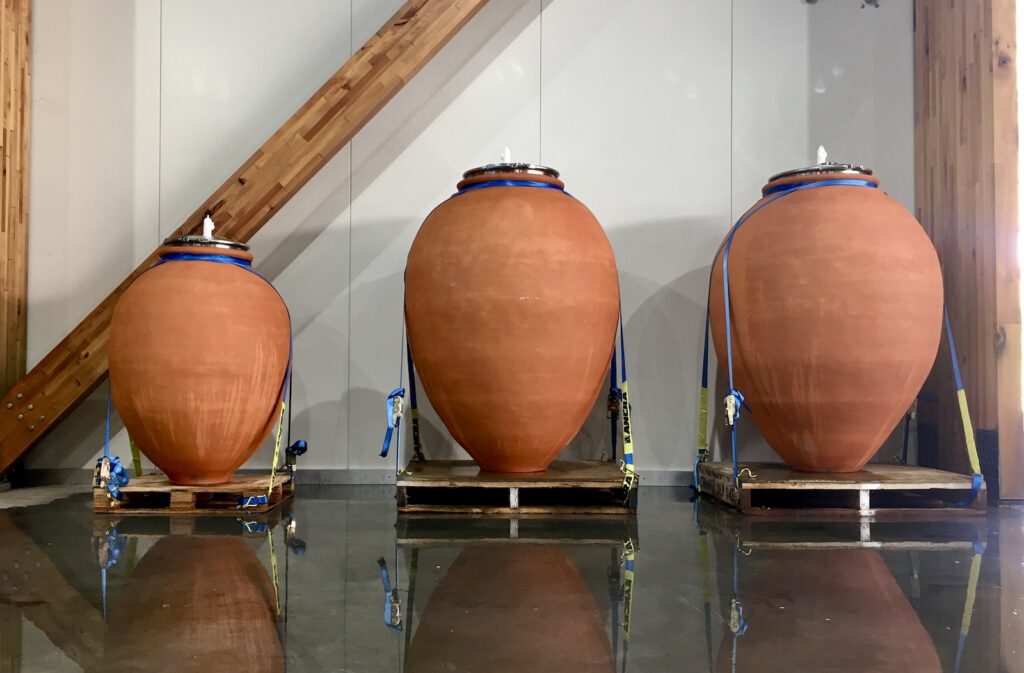
There are groups of people that have formed. They taste wine together and there is an exchange of ideas. That’s what makes us better. We need to have that – it’s so important. All those samples that are sitting on my bench there – I just took those down to Jannine, because I wanted her to try my blends for this year. There are little pockets of wine communities – when you talk about Wairarapa – I know some people down there get together and drink wines. We have a Tasting Group among winemakers and we’ll often do a Blind Tasting on a theme – somewhere like Dan’s wine shop on his big table.
To me, I think none of us get bored with wine because you could spend your whole life learning about it. When I was in Burgundy, I was overwhelmed because you could spend your whole life learning about those vineyards, the history, the producers. Once you make peace with the fact that there’s not enough time to learn it all, you’re OK with it just being a journey. That’s what keeps me motivated, is that you’re always learning something new every year. When you have a couple of difficult years, and making wine without sulphur, there is nowhere for you to hide.
WF: How are this years wines going to be?
AF: There’s going to be lower alcohol. Fresh and easy to drink early – very much like the ‘22s. One of my wines had the colour drop out of it. I made it carbonic like I always do, and when I pressed it, it was garnet; and then the next day it was almost pinkish colour, and I was like “Oh my God, what’s happened?”. And I know it was because there was a little bit of botrytis out there. I do really good hand sorting but sometimes you just can’t get it all. There’s an enzyme called laccase and it strips the colour. That’s something that usually happens to the machine-harvest guys because all the stuff goes in there! And here I am… I’ve just gotta embrace it. So I’ve got two Gamays this year and one is very much a light red, and people will probably think it is a rosé. But it is not, it is a red wine that has been macerated for two and a half weeks. It is what it is.
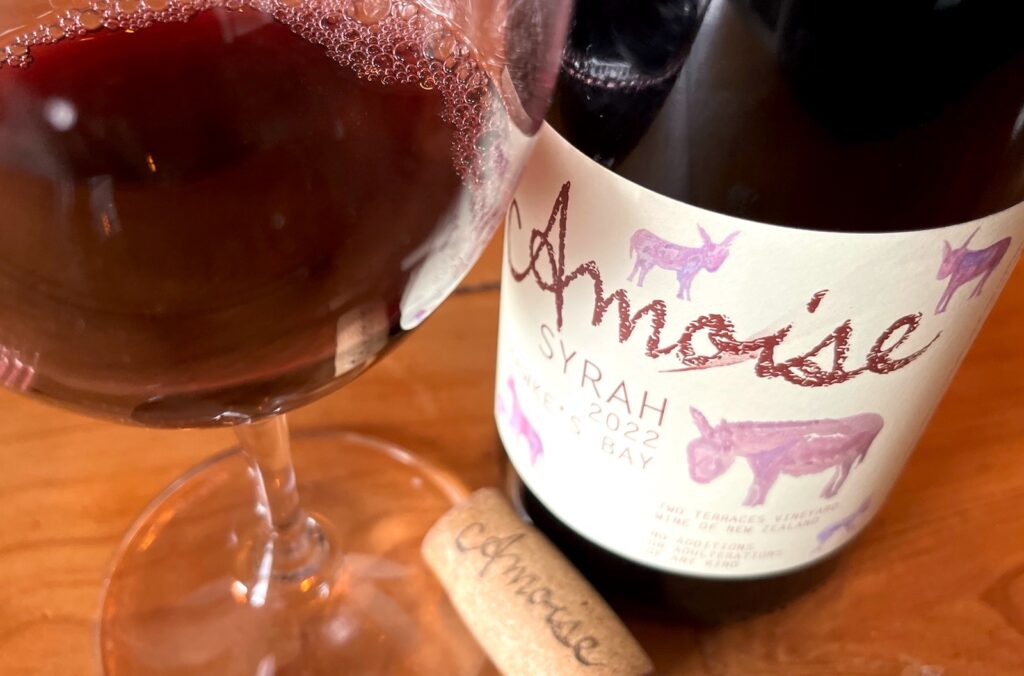
WF: Are your wines ones that could be put away in a cellar and age well?
AF: I can’t answer that question yet, because I don’t know. I want to make wine that will age and evolve over time. There’s no reason why it couldn’t, but the wines are still all so young that I can’t answer that question. I still have 2018 Pinot Gris, and I’m saving a couple of cases of each wine vintage. There’s no reason why wines that don’t have sulphur can’t age. I’ve tried old Beaujolais from Marcel Lapierre, from when he stopped using sulphur in the 1970’s. I want to make good quality wines and each vintage is going to be different. It’s a lot easier to make a wine to put away in those great years – 2019, 2020, 2021 – especially as I pick a bit earlier for freshness. In 2023 with the cyclone, a lot of decisions were made for me.
WF: So your wines will age ten years, and presumably you’ll be making them in ten years time. Where do you see the market for this in ten years time?
AF: I think it will keep growing. Let’s face it, we’re so behind the times in New Zealand when it comes to any wine trends. We are a good 10-15 years behind everywhere else. I was drinking these types of wines in 2009 in Europe and it was the norm. Australia had ‘Rootstock’ in Sydney in 2013. I was there in 2015 and went to all the tastings and talks, and there was very much a vibe there already. When I came back to New Zealand, there was natural wine being made by pioneers like Alex Craighead and Cambridge Road.
In 2015, myself, Stephen Wong and Richard Klein formed a committee to have the first natural wine fair – Budburst – in New Zealand. We wanted to educate and create a scene so that the wine would become acceptable. So that restaurants would actually put it on their list! We did the first one in 2016 and a second one in 2018, with very strict parameters about entering. People were angry when their wines didn’t qualify – I got some ‘not very good’ calls! But we provided a safe learning environment for the consumer – to have fun and taste the wine; and if they wanted to learn more – attend a seminar.
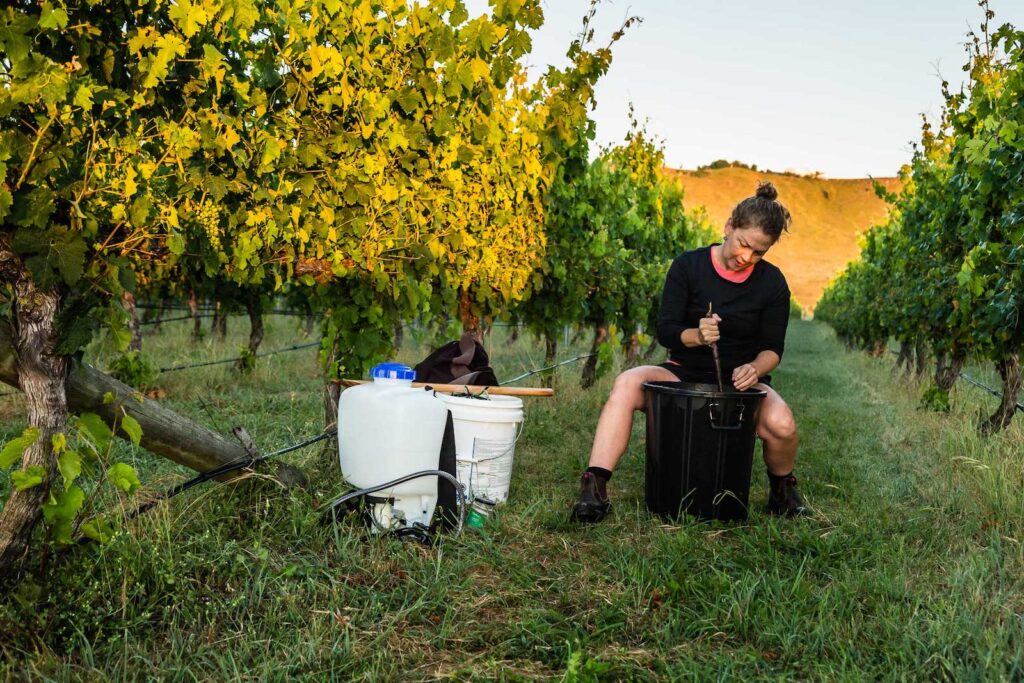
After that I started to see natural wines pop up on lists in Wellington. It very much started there and Auckland was not in the game until much later. I think we’re only at the beginning of the ‘growth phase’.
WF: So what happened to those shows – are there plans for more?
AF: No. They’re gone now (laughs). We are all operating our own businesses now and don’t have the time or the space for that planning. It took us a year to plan the first one. It was like giving birth to a child. I’ll never forget when it was finally done – I slept for a week. But it was worth it and it was great. The changes that I’ve seen in New Zealand since then has been really heart-warming. Now people like myself have the space to operate. I never would have thought that when Jo Burzynska is naming the fifty most exciting wineries that there would have been a category for ‘Best in Natural Wine’ and that I would be mentioned. It’s incredible that we even have that as a category! It’s the first time I’ve ever been in a “Top 50”.

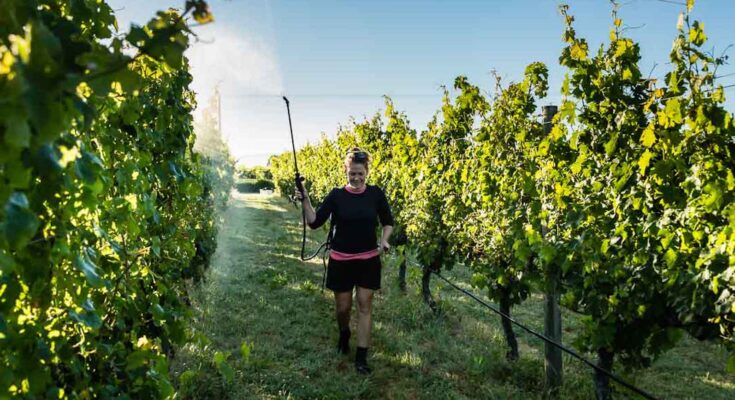
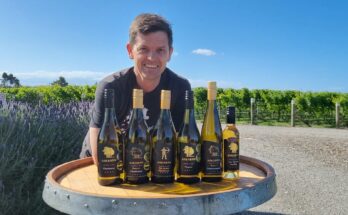
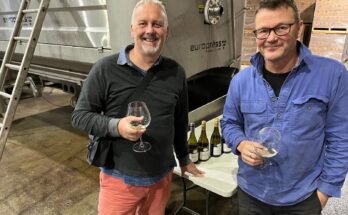
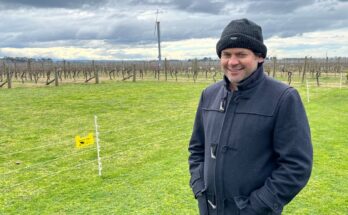
One Comment on “Winemaker series – Amy Farnsworth”